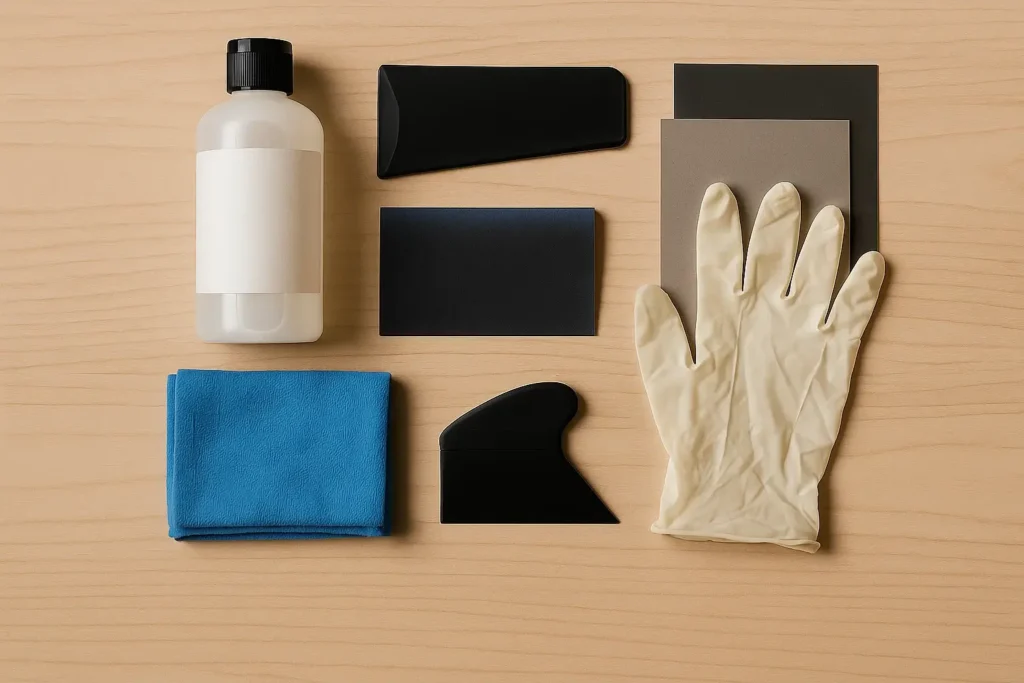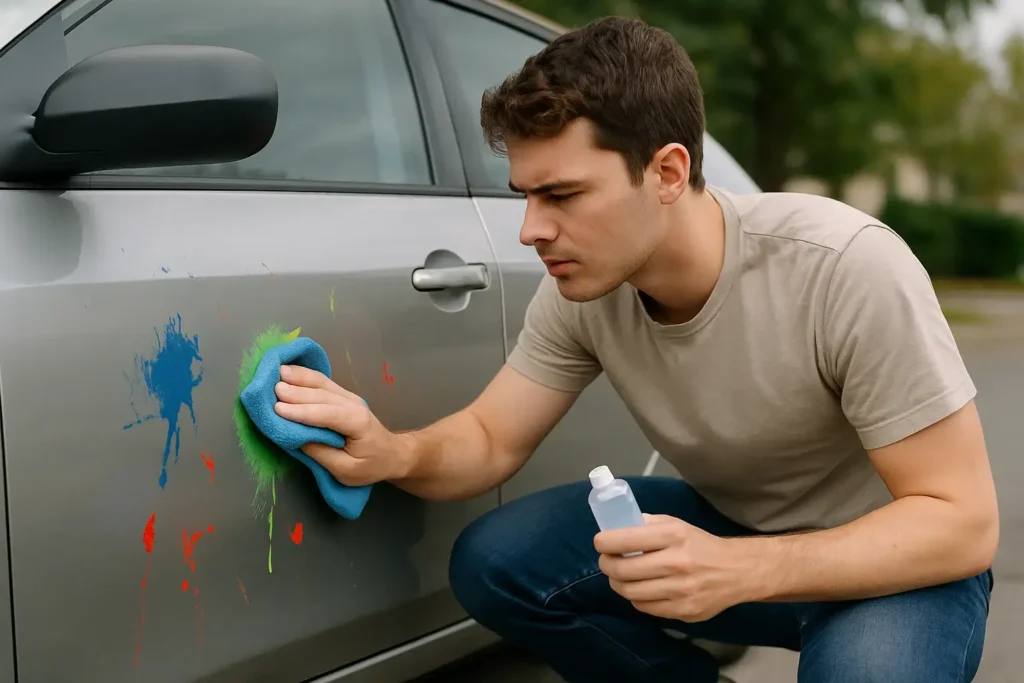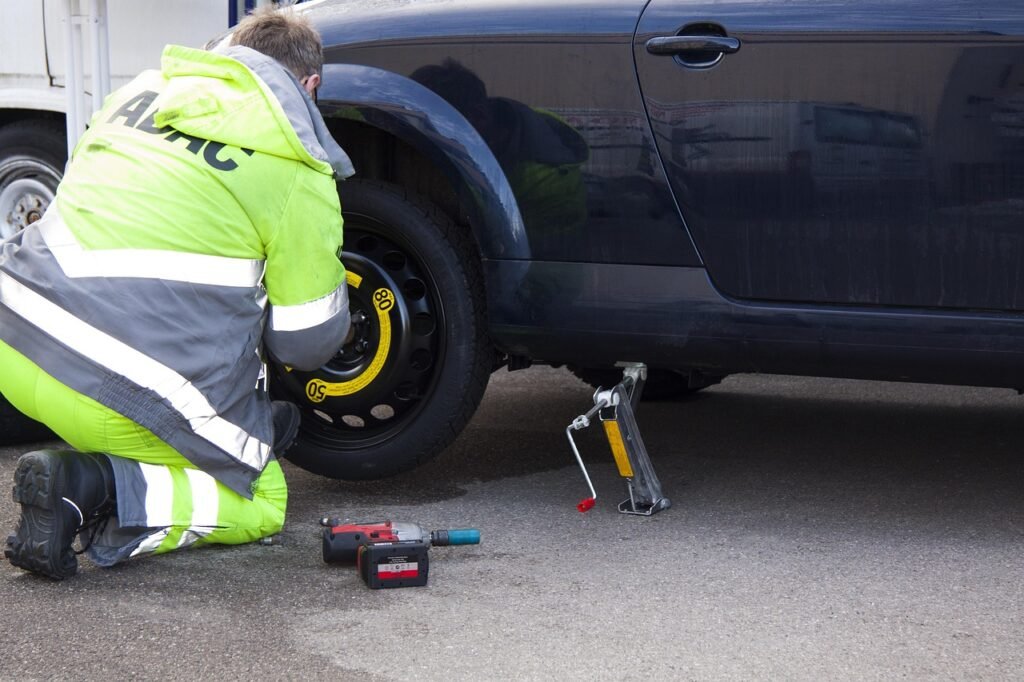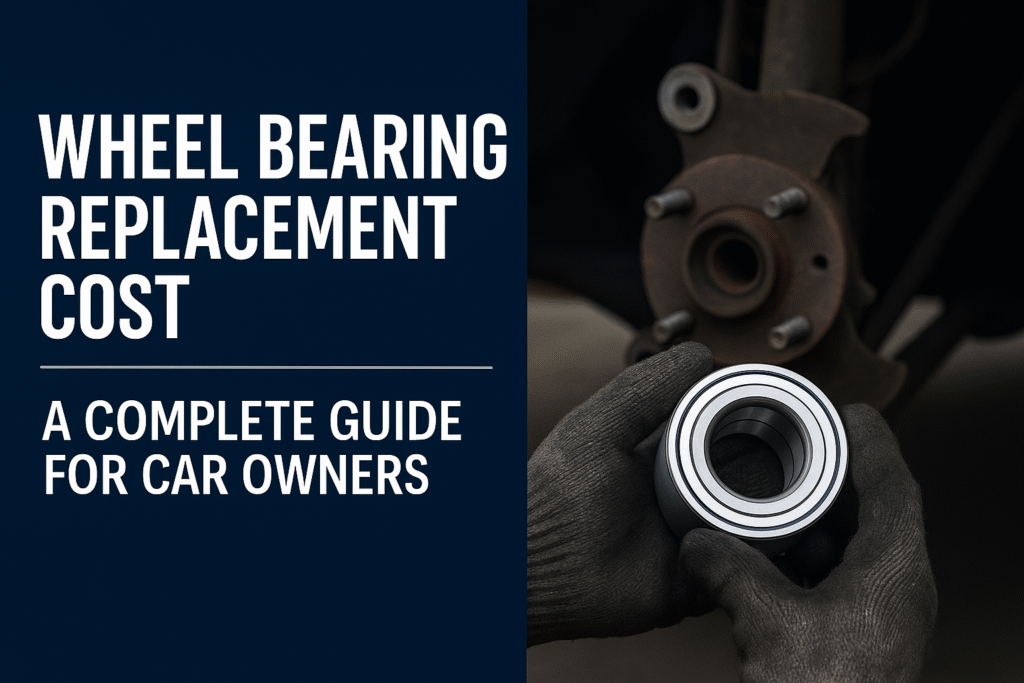Introduction
Finding unwanted paint on your car can be frustrating, whether it’s from careless overspray, a parking lot mishap, or even intentional vandalism. Fortunately, there are safe and effective ways to remove paint from your car without damaging its original finish.
However, improper removal techniques can lead to scratches, clear coat damage, or even permanent discoloration. This guide will walk you through the best methods for getting paint off your car while keeping your vehicle’s original paint job intact.
Common Reasons You Might Need to Remove Paint from a Car
Before you reach for cleaning products, it’s helpful to understand why the paint is there in the first place. Some common scenarios include:
- Overspray from nearby house or industrial painting jobs
- Vandalism or graffiti with spray paint
- Paint transfer from another vehicle during a minor collision or scrape
- DIY projects gone wrong, like touch-up paint or decals
- Environmental causes, such as industrial fallout or tree sap mixed with paint-like residues
Knowing the source helps determine the best removal method.
How to Identify the Type of Paint on Your Car (and the Paint to Be Removed)
Your Car’s Original Paint
Most modern vehicles have a three-layer paint system:
- Primer
- Base coat (color)
- Clear coat (protective finish)
Protecting the clear coat is critical when removing foreign paint.
The Paint to Be Removed
Ask yourself:
- Is the paint fresh or dried?
- Was it applied recently (e.g., spray paint, latex paint)?
- Is it water-based or oil-based?
Quick tip: If a small amount comes off with soap and water, it’s likely water-based.
Safety Precautions Before Removing Paint
Working on your car’s paint requires care. Here’s how to stay safe and avoid causing further damage:
- Wear gloves and eye protection
- Work in a shaded, well-ventilated area
- Make sure the surface is cool to the touch
- Test any product on a small, hidden area first
- Keep microfiber towels and clean water nearby
- Consider masking off areas you want to avoid

Interesting read: How to Remove Window’s Tint?
Methods to Get Paint Off a Car
1. Soap and Water (for Fresh or Water-Based Paint)
If the paint is recent, this might be all you need.
Instructions:
- Mix car soap with warm water in a bucket.
- Use a microfiber cloth to gently scrub the area.
- Rinse thoroughly.
- Dry with a clean towel and inspect.
Pro Tip: Avoid using dish soap or household cleaners—they can strip wax or damage the clear coat.
2. Clay Bar Treatment
A clay bar can remove bonded contaminants like overspray or paint specks without scratching.
Instructions:
- Wash and dry the car thoroughly.
- Spray clay lubricant or quick detailer on the affected area.
- Gently rub the clay bar in a back-and-forth motion.
- Wipe clean and repeat if needed.
- Finish with wax or sealant.
Best for: Light overspray, environmental fallout, minor paint transfer
3. Rubbing Alcohol or Acetone (Use with Caution)
For stubborn paint transfer or small spray paint marks.
Instructions:
- Dilute isopropyl alcohol (70% or less) or acetone with water.
- Apply to a microfiber cloth—never directly to the car.
- Gently rub the paint mark in circular motions.
- Wipe clean and rinse with water.
- Reapply wax or polish to protect the area.
⚠️ Warning: Do not overuse or rub aggressively. These solvents can strip your car’s clear coat.
4. Commercial Paint Removers
There are paint-safe products specifically made for removing graffiti or overspray.
Instructions:
- Choose an automotive-grade paint remover (e.g., Goo Gone Automotive, 3M Adhesive Remover).
- Follow manufacturer directions carefully.
- Apply with a microfiber cloth and rub gently.
- Rinse the area and finish with wax or sealant.
Best for: Dried or stubborn paint not removed by clay or soap
5. Professional Detailing
When the job is too large or the risk of damage is too high, a professional detailer can help.
Services they offer:
- Machine polishing or buffing
- Wet sanding for severe overspray
- Clear coat restoration
- Paint correction and protection
Expect to pay between $100–$500+ depending on severity.
Interesting read: How to Clean Headlights of Your Car?
What Not to Do When Removing Paint
Avoid these common mistakes:
- ❌ Don’t use steel wool, scrapers, or abrasive pads
- ❌ Don’t use household cleaners like bleach, oven cleaner, or acetone straight from the bottle
- ❌ Don’t rub dry or dirty surfaces—you’ll cause scratches
- ❌ Don’t attempt sanding unless you’re experienced
How to Protect Your Car’s Original Paint During Removal
- Always wash and dry the area before using any product
- Use plenty of lubrication with clay bars or solvents
- Work in sections to avoid drying or streaking
- Apply wax or paint sealant after cleaning to restore protection
When to See a Professional
Consider professional help if:
- The paint covers a large area or is deeply embedded
- You see signs of clear coat damage or fading
- DIY methods aren’t working after several attempts
- You’re unsure about the type of paint involved
Conclusion
Removing paint from your car doesn’t have to be risky or expensive. By identifying the type of paint and using the right method from clay bars to commercial removers you can clean up your car’s finish without compromising its integrity. Always test first, work gently, and don’t hesitate to seek professional help when needed.
Can I use rubbing alcohol to get paint off a car?
Yes, you can use rubbing alcohol (isopropyl alcohol) to remove paint transfer or small paint splatters. Dilute it with water (typically 1:1) and apply gently using a microfiber cloth. Be sure to rinse and wax the area afterward to protect the finish.
Will WD-40 remove paint transfer from a car?
WD-40 can help remove minor paint transfer caused by contact with another vehicle or object. Spray it on the affected area, let it sit for a few minutes, and gently rub with a soft cloth. Avoid excessive scrubbing to protect the clear coat.
Does nail polish remover damage car paint?
Yes, most nail polish removers contain acetone, which is too harsh for car paint and can strip the clear coat or cause permanent damage. If you must use it, opt for an acetone-free version and test it on a hidden spot first though it’s generally not recommended.
How do I remove dried paint from my car without scratching it?
To remove dried paint safely, soften the paint using warm soapy water or a solvent like tar remover. Then, use a clay bar or plastic scraper (non-metal) with gentle pressure. Always wash and wax the area afterward to restore protection.
Can I remove spray paint from my car’s surface?
Yes, you can remove spray paint from a car using automotive clay bars, graffiti remover, or rubbing compound—depending on the severity. Avoid harsh chemicals like paint thinner, as they may harm your car's original paint.
Is it safe to use a clay bar to remove paint marks?
Yes, a clay bar is a safe and effective way to remove surface contaminants, including light paint transfer. Lubricate the area well with detailing spray or soapy water to prevent scratching and glide the clay gently over the surface.
What products are best for removing road paint from a car?
The best products include bug and tar remover, WD-40, Goof Off (automotive version), and clay bars. For heavy-duty cases, use a commercial road paint remover specifically designed for cars. Always read product labels and test first.
Can toothpaste remove scuff or paint marks from a car?
Toothpaste (non-gel, with baking soda) can help remove light paint transfer or scuffs. Apply a small amount on a damp microfiber cloth and rub gently. It works as a mild abrasive, but use it cautiously and polish the area afterward.
Should I take my car to a professional for paint removal?
If the paint is extensive, deeply bonded, or near delicate areas (like sensors or trim), it’s best to consult a professional detailer. They have the right tools and products to remove paint safely without damaging your car’s finish.



